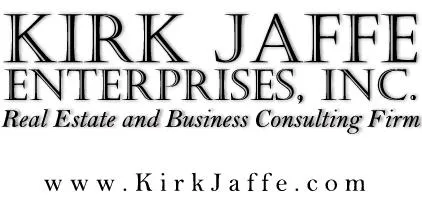CALL US TODAY: 775 415 - KIRK (5475)
Register for Our Next Live Webinar:
"The Momentum-Maker Mastermind: Mindset, Methods, & Metrics"
Join Kirk on April 12th @9:45 AM (Pacific Time)
GET FUNDED FAST FOR HOME AND BUSINESS!
Kirk Jaffe Enterprises, Inc. has funded thousands of companies just like yours. Contact Us today to Get Started!

Our Services
Kirk Jaffe Enterprises, Inc. has multiple services for home buyers and business owners.
Make us your preferred solution for home and commercial real estate.

MORTGAGE LENDING
We offer the most competitive rates and excellent service beyond closing. Guaranteed! PRO.
REAL ESTATE AND PROFESSIONAL CONSULTING
We offer guidance to real estate professionals, tax professionals, lawyers, and CPA's.
BUSINESS CONSULTING
Are you ready to grow your business to
the next level and beyond. Kirk has helped hundreds of businesses and
can help you get there faster.
INVESTMENT ASSISTANCE
Our proven track record in solid investments has help hundreds and could help you too. Ask us how!

FIND OUT WHY KIRK JAFFE IS THE BEST CHOICE FOR LOANS AND HELPING BUSINESSES GROW!
Kirk Jaffe, CEO/Founder – Executive Management of $200MM private investment fund including Mortgage Notes, Real Estate Owned (REO) and Commercial Property Holdings. He has overseen and held executive authority of over 20,000 real estate transactions in his 20-year real estate career including buying and selling of property, foreclosure, short sale, loan modification, rehabilitation of property with an aggregate over $1 Billion value. Kirk has also originated over $ 1 Billion of new Mortgages.
Kirk is the past President of the Universal City/North Hollywood Chamber of Commerce as well as a former co-chair of the ALFN Commercial Practices Committee. He is active as a speaker and moderator of several trade organizations including the CA Mortgage Bankers Association (CMBA), Mortgage Banking Association (MBA), and the Attorney Legal Financial Network (ALFN). Mr. Jaffe is quoted or has been a guest of several media outlets including: KABC790 Talk Radio, NBC and the Los Angeles Daily News to name a few.
Kirk Has Appeared On:
How Can We Help
You Today?


Start Quote

Change Plan

Contact
Let Us Know What You Need!
We custom fit every service to your personal business needs. Whatever it is, we have a solution. Just click the button below to get assistance today!
If you're looking for a firm who can help you with not just your mortgage, but help you GROW YOUR BUSINESS FAST... you're where you should be!
MORTGAGE LENDING
We offer Custom Tailored mortgages for Home or Business!
BUSINESS CONSULTING
Grow your business FAST with our Business Consulting Services!
INVESTMENT CONSULTING - REAL ESTATE ASSETS
Our win/win approach to investing has helped hundreds. FIND OUT MORE!
REAL ESTATE PROFESSIONALS
If you are a real estate professional and are ready to work with a partner with years of experience, you're in the right place.
CPAS, ATTORNEYS, AND INSURANCE PROFESSIONALS
If you have questions about the potential legal implications of real estate transactions for your clients, Kirk Jaffe has the answers!
GET STARTED TODAY
Getting started with Kirk Jaffe Enterprises is super easy. Find out how it works below!
WHAT OUR CLIENTS HAVE TO SAY

“What a GREAT guy Kirk is! I highly recommend him and his services all the time and for my own home loan needs. Why would I say that as a Broker myself? Well as a Buyer and a Broker I cannot have my hand into many aspects of the transaction, so I trust Kirk with my financing needs he has yet to let me down! "
Steve Duncan

"Kirk is my go-to lender. He has worked many “miracle situations” and provides top notch service from start to finish...."
Jeff J. Grice

"I have known Kirk Jaffe for many years. Kirk has a stellar reputation. You can see his reviews by going to www.mycity.com/profile/kirk-jaffe."
Bob Friedenthal

"When I need any information regarding the Real Estate Financing space for a client, my first call is to Kirk Jaffe. He is knowledgeable, professional, and experienced. He stays on top of cases and follows up with clients. He is a true asset to my business."
Bruce Fine

"Kirk works hard and well day and night, a kind person and gets it done fast!"
Melissa Oppenheimer

"Kirk did a fabulous job. He walked me thru the process and it was incredibly easy compared to other mortgages I've done. Thanks to Kirk, my house closed in under 21 days, and he got me a great interest rate."
CHARLIE JEWETT

WHY WORK WITH KIRK JAFFE ENTERPRISES, INC?
Because we offer the best service at affordable rates and will help your company grow faster! Click the button or
CALL US AT (775) 415 - KIRK (5475)

The Perils of the Fed’s Vast Bond Holdings
The Federal Reserve is shedding assets at a glacial pace, exposing the financial system to continuing risks, our columnist says.
The Federal Reserve is engaged in a colossal transformation of the financial economy. Yet scarcely anyone is noticing.
What it’s doing is like walking a herd of elephants through Midtown Manhattan without attracting much attention. That used to happen in New York in the wee hours — when the circus came to town and elephants walked over the city’s bridges and through its tunnels to Madison Square Garden.
I’m not talking about the Fed’s decisions on short-term interest rates, which get the headlines when the central bank meets, as it did on Wednesday. The Fed kept those rates steady — and fairly high — at about 5.33 percent, in a frustrating battle to subdue inflation.
I’m talking about a remarkably ambitious and poorly understood Fed project known as quantitative tightening — Q.T. for short. That refers to the Fed’s reduction of the Treasury bonds and mortgage-backed securities on its mammoth balance sheet.
The central bank said on Wednesday that it would start slowing the pace of this asset paring in June, to $60 billion a month from a maximum reduction of $95 billion a month. It’s not selling securities, just quietly eliminating some as they mature, without reinvesting the proceeds.
These may look like big numbers. Yet on a comparative basis, they are piddling.
Consider that the central bank’s assets peaked two years ago at almost $9 trillion. That sum is roughly one-third of all the goods and services — the gross domestic product — produced in the United States in one year. Now, after much careful effort, the Fed has cut that total to about $7.4 trillion.
Yes, it has removed about $1.6 trillion from its coffers. But even after two years of quantitative tightening, the amount of bonds and securities that the Fed still retains is stupendous.
This is mind-boggling stuff, but a basic understanding of quantitative tightening is important for several reasons:
The policy is affecting financial markets now and making living conditions harder for millions of people — putting upward pressure on the Treasury and mortgage markets and a host of related interest rates, effectively supplementing the monetary tightening that the Fed put in place by raising the short-term federal funds rate.
Quantitative tightening is a perilous operation. Earlier attempts — notably, in 2019 — disrupted financial markets. That could happen again if the Fed is too hasty.
If the Fed acts as slowly as current plans project, it will own trillions in securities for years to come. An experiment begun in the 2008 financial crisis is becoming permanent, endowing the Fed — and whoever controls it — with vast expanded powers.
The slow pace of quantitative tightening is partly responsible for the Fed’s inability to contribute to the national budget.
That’s because the Fed has also raised interest rates, which move in the opposite direction of bond prices. With its own policies, the Fed has reduced the value of its asset holdings. And by now it has inflicted more than $133.3 billion of losses on itself.
Unlike Silicon Valley Bank, which became insolvent last year, the Fed can survive paper losses — but it can’t help the U.S. government reduce staggering deficits.
Quantitative Easing
Q.T. is the inverse of an unorthodox approach to monetary policy known as quantitative easing, adopted by the Fed when Ben S. Bernanke was chair. After the collapse of Lehman Brothers in September 2008, the economy and the markets crashed. Trying urgently to give the economy a stimulative jolt, the Fed lowered interest rates to nearly zero, but that wasn’t enough.
Those were desperate times, and the Fed improvised. Expanding on a program that the Bank of Japan started in 2001, the Fed began large-scale buying of Treasury bonds and mortgage-backed securities.
The idea, as Mr. Bernanke said in his book “21st Century Monetary Policy,” was “to influence private-sector decisions, which don’t usually depend directly on Treasury yields.” The Fed, he added, “expected that lower yields in the Treasury market would result in lower yields elsewhere — for example, on residential and commercial mortgages and corporate bonds.”
In addition, Fed policymakers expected that “lower long-term, private-sector interest rates should stimulate business investment and consumer spending on new cars and houses,” Mr. Bernanke said. “Lower long-term interest rates would also increase the prices of other financial assets, such as stocks, and weaken the dollar, easing financial conditions more broadly.”
All of those things happened.
But what started as a temporary expedient evolved into a regular part of the Fed’s toolbox, one that the Fed has used too frequently, some economists say.
“The analogy is a terrible one, but what the Fed has done is engender an addiction,” Raghuram Rajan, a finance professor at the University of Chicago, said in an interview.
Mr. Rajan, who is a former governor of the Reserve Bank of India and chief economist of the International Monetary Fund, said that U.S. banks had become “addicted to the easy liquidity” associated with the Fed’s expansionary policies, and that weaning them off this flood of money had proved excruciatingly difficult.
It’s revealing to look back at early official Fed commentary. In February 2010, in a statement before the House Committee on Financial Services, Mr. Bernanke said, “The Federal Reserve anticipates that it will eventually return to an operating framework with much lower reserve balances than at present.” His statement was labeled “Federal Reserve’s exit strategy.”
But the Fed never exited its quantitative easing strategy. In fact, Fed records show that when Mr. Bernanke testified in 2010 about an eventual end to quantitative easing, the central bank’s balance sheet contained less than $2.3 trillion in assets. Fourteen years later, the Fed holds more than three times that total, even after its most ambitious “tightening” round to date.
Why Tightening Is Tough
Crises happened, the economy faltered and the Fed engaged in multiple rounds of quantitative easing under Mr. Bernanke and his successors, Janet L. Yellen and Jerome H. Powell, the current Fed chair.
All tried quantitative tightening — which, in early Fed planning, appeared to mean a reversal of the Fed’s active intervention in the bond and mortgage markets, a radical reduction in its holdings and a return to pre-crisis operations. In his 2010 testimony, for example, Mr. Bernanke said the Fed could eventually sell the assets it purchased.
But all these years later, it has not done so. When it is not in emergency-response mode and is trying to return to something resembling “normal,” it has allowed maturing bonds and other securities to slowly “run off” or “roll off,” instead of reinvesting the proceeds, which would maintain the size of its asset stash.
It’s moving at an excruciating pace. A report in April by a group within the New York Federal Reserve Bank projected that even with continued quantitative tightening, the assets on the overall Fed balance sheet will fall no lower than $6 trillion in the next few years — and then begin rising again.
In the past, when the Fed even hinted that it might swiftly shed assets, financial markets buckled. In a news conference on Wednesday, Mr. Powell alluded to the 2019 quantitative tightening effort that led to chaos in the money markets — and an about-face by the central bank. The Fed is now slowing the already stately pace of balance sheet roll-off precisely “so that it doesn’t lead to financial turmoil as it did the last time,” he said.
Simply put, the Fed’s balance sheet has assets on one side and liabilities on the other — and they must balance. When it buys assets, it creates bank reserves out of thin air, and it has been paying banks to keep those reserves deposited at the Fed. The reserves are available for emergencies as well as for routine operations. In periods of quantitative tightening, like this one, both the assets and the reserves shrink — and that has periodically caused major dislocations.
So far in this round, the Fed has been managing the process deftly. Scarcely anyone has noticed it drain more than a trillion dollars from the financial system. Yet by concentrating so much financial firepower in its own hands, the Fed may be assuring that the potential for major flare-ups, and even worse, will always loom.
©TheNewYorkTimes

CONTACT US TODAY
Need to reach us? Send us an email or give us a call today.
Kirk Jaffe Enterprises, Inc.
195 Highway 50, Ste 104-476
Stateline, NV 89449










